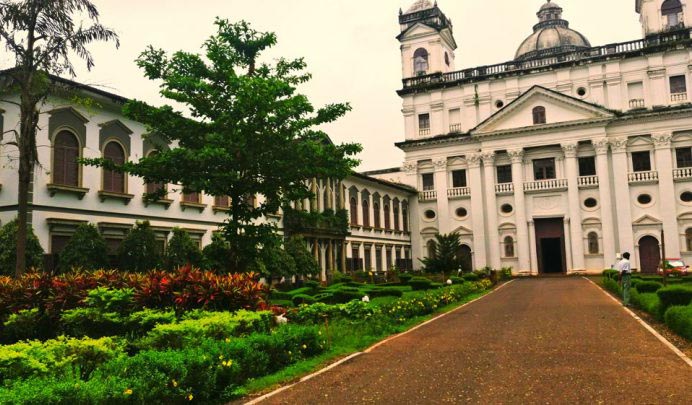Church of St. Cajetan

Information on Church of St. Cajetan (Goa) - History & Architecture
The St. Cajetan church is located in the state of Goa, India at a place known as Old Goa. This particular church is located just opposite to the Se Cathedral church and is known to be an important place of religious worship for those of the Christian faith. The church was originally to be named as the 'the church of Our Lady of Divine Providence' and was built by the Italians. The Italians who built this church were known as the friars of the Order of Theatines. They were originally sent vy the Pope Urban the third to preach Christianity in the Kingdom of Golconda, but as they were unsuccessful in doing so, they settled in Goa during the year 1640. The site to build the church was obtained in the year 1655 and the church was finally built by the 17 century.
Church of St. Cajetan Religious Importance
The St. Cajetan Church belongs to the Italian faction and can be considered to be one of the oldest churches in Goa. The main altar is dedicated to the patron saint St. Cajetan who is the founder of the church. The church is one of the most celebrated ones in all of Goa and is also home to seven altars all of which are the hold high places in the religion. The main altar of the church is dedicated to the patron of the church i.e. St. Cajetan whilst the rest are dedicated to the holy family.
Church of St. Cajetan Architectural Importance
The church is one of a kind and is really old one that has a bit of history embedded within it. The church has seven altars in total that is dedicated to different beings of Christianity. The main altar is dedicated to the founding member of the church known as St. Cajetan, however apart from him there are six others who share the same reverence as the patron saint. The other altars within the church are dedicated to the Holy family and have a history of their own. These altars are elaborately carved in the baroque style and have twisted shafts with large angel figurines. The altars also have sacred Italian paintings that depict the life of the patron saint. The church is said to be originally be built on the model of the Basilica of St. Peter in Rome. The church has distinct features of Corinthian architecture on its outer and inner walls and finishing's however the gilded altars with elaborate carvings reflect the baroque style of architecture. The church is built out of laterite blocks that plastered with lime.
There are two towers on either side of the main facade that serve as the belfry. The interior of the church is in the form of a cruciform with the help of four pillars and internal buttresses. The main body of the church actually reflects a Greek cross. The dome is supported by four massive piers faced by Corinthian pilasters and rests on a drum. There is an inscription on the inside of the dome towards the base and it is a verse from St. Matthews Gospel.
There are also ribbed vaults in the church which are coffered with varying floral designs and are present at varying heights of the aisle and nave. The niche in between the vaults has been placed with wooden statutes of saints.